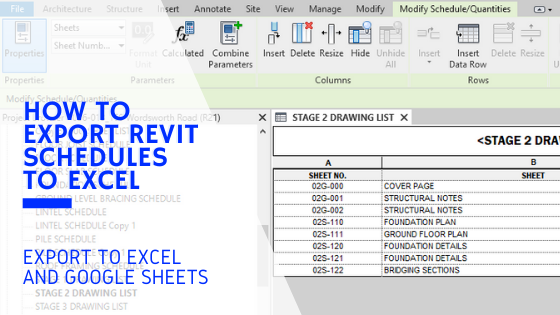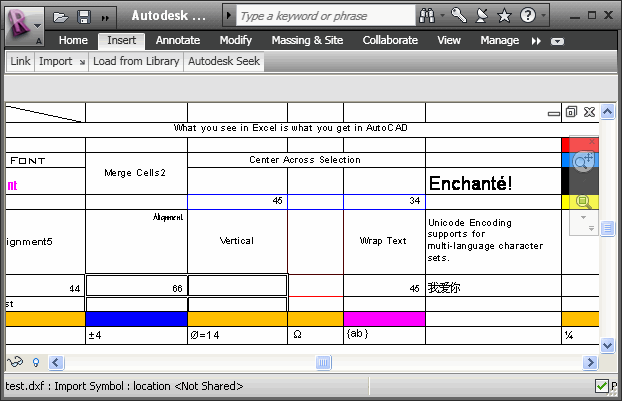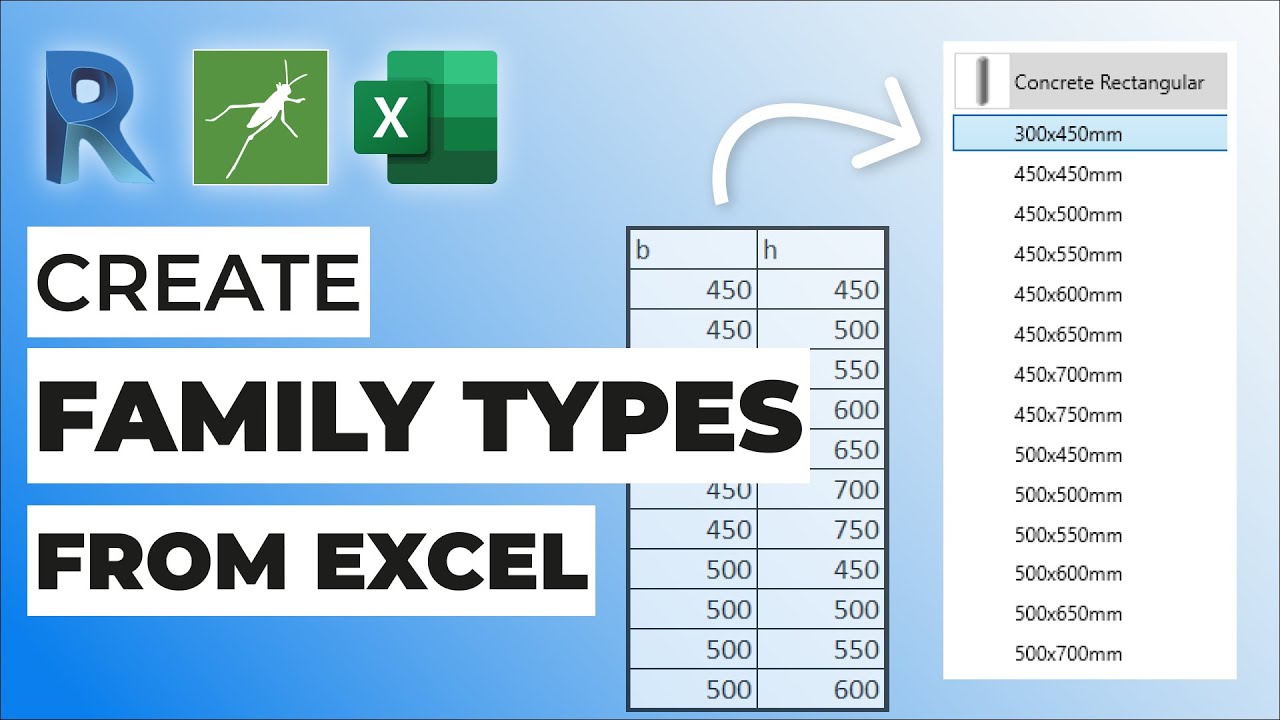Import Excel into Revit: Improving Your Workflow
Wiki Article
Excel-to-Revit: A Game-Changing Workflow for Architectural Design - Introducing the Keys
Presenting excel-to-revit, the game-changing process that will transform your design process. With excel-to-revit integration, you can streamline your building layout, unlock effectiveness, and optimize cooperation within your team. Get ready to take your building layout to the following level with excel-to-revit!The Power of Excel-to-Revit Combination

Picture the convenience of having the ability to modify and update project data in Excel, and immediately see those changes mirrored in your Revit version. Say goodbye to hands-on data access or tedious updates. With Excel-to-Revit assimilation, you can conserve time and decrease errors by leveraging the power of Excel's solutions and functions to automatically create accurate information in Revit.
Not only does this assimilation enhance efficiency, however it also improves collaboration among team participants. You can quickly share Excel files with associates, who can then import the information into their Revit versions. This promotes a smooth exchange of information and makes certain that everybody is working with one of the most up-to-date information.

Improving Building Layout With Excel-To-Revit
Enhancing architectural style is made easier with using Excel-to-Revit (revit tools). With this powerful assimilation, you can optimize your process and conserve important time throughout the layout process. By leveraging the capacities of Excel and Revit, you can effortlessly move information in between the two systems, eliminating the requirement for manual information entrance and lowering the threat of mistakesExcel-to-Revit enables you to import and export data effortlessly, enabling you to conveniently update and change your architectural designs. You can produce schedules, determine amounts, and create reports in Excel, and after that transfer that information directly into your Revit design. This assimilation ensures that your design info is constantly current and synchronized, getting rid of the requirement for hand-operated updates and reducing the chances of variances.
By utilizing Excel-to-Revit, you can additionally make use of the powerful computational capabilities of Excel. You can carry out complicated computations, assess information, and automate repetitive tasks, all within Excel. Then, with simply a couple of clicks, you can import the results back right into Revit, enabling you to make informed style choices and optimize your architectural designs.
Opening Effectiveness: Checking Out the Excel-to-Revit Process
Maximize your performance by flawlessly incorporating Excel and Revit for a much more effective workflow. With the Excel-to-Revit workflow, you can open an entire new level of performance in your building style process. By utilizing the power of Excel's information administration capabilities and combining it with the adaptability and precision of Revit, you can improve your layout procedure and save valuable time.Among the essential benefits of this assimilation is the capability to import and export information in between Excel and Revit. This implies that you can easily move job details, such as space schedules or material amounts, from one software program to the other, eliminating the requirement for manual information entry and reducing the opportunities of errors. You can also produce customized solutions and calculations in Excel to automate recurring tasks and execute complex estimations, which can then be flawlessly integrated right into your Revit models.
In Addition, the Excel-to-Revit workflow enables better control and partnership in between staff member. With Excel acting as a central data hub, numerous staff member can function on different elements of the task concurrently, sharing and updating details in real-time. This not only enhances interaction but likewise makes sure that everyone is collaborating with one of the most up-to-date data, removing the risk of variances.
Making Best Use Of Collaboration: Excel-to-Revit for Architectural Teams
By effortlessly incorporating Excel and Revit, architectural teams can substantially boost collaboration and achieve a lot more reliable design results. When utilizing this effective workflow, you can quickly transfer information in between Excel spread sheets and Revit versions, their explanation simplifying the design process and improving interaction amongst group participants. With Excel-to-Revit assimilation, you can easily import task information, such as area timetables, product amounts, and task criteria, directly into Revit, eliminating the need for manual data entry and reducing the chances of mistakes. This smooth link enables for real-time updates, making sure that everybody is collaborating with the most up-to-date information and staying clear of disparities in between different files.Additionally, by leveraging Excel's powerful estimation abilities, you can perform intricate computations and evaluation on your style data, driving and supplying important understandings notified decision-making. This assimilation likewise enables you to export information from Revit to Excel, enabling you to produce comprehensive records, charts, and charts for presentations and evaluation. This collaborative process advertises efficient interaction and sychronisation amongst team participants, as Excel acts as a main center for data monitoring and sharing.
Overall, by welcoming the Excel-to-Revit workflow, architectural groups can achieve greater degrees of collaboration, effectiveness, and precision in their design procedure. import excel into revit. This combination encourages teams to interact seamlessly, ensuring that everyone is on the exact same web page and adding to the success of the job
Revealing the Tricks of Excel-to-Revit Assimilation

Among the secrets of Excel-to-Revit assimilation is the ability to take advantage of the power of solutions and estimations in Excel to drive parameters and generate facility geometries in Revit. You can connect Excel spreadsheets to Revit households, enabling you to input information straight right into the spreadsheet and have it immediately upgrade in the Revit model. This enhances the style procedure and makes certain accuracy and consistency across the job.
One more More Info trick is the capability to develop custom timetables and reports in Excel, using data drawn out from Revit. This enables you to analyze and imagine job info in a manner that is not feasible within Revit alone. You can easily generate quantity take-offs, expense price quotes, and task timelines, providing important insights for decision-making and job administration.
Furthermore, Excel-to-Revit combination allows effective partnership among employee. web link Multiple users can deal with the exact same Excel spreadsheet all at once, making it less complicated to coordinate and track modifications. You can likewise utilize Excel's commenting feature to offer feedback or communicate design modifications.
Verdict
By integrating the power of Excel and Revit, architects can now function a lot more effectively, save time, and produce better layouts. Beginning integrating excel-to-revit combination into your building style process today and revolutionize the way you function.With just a few clicks, you can import the outcomes back right into Revit, enabling you to make educated design choices and enhance your architectural layouts.
By making use of the power of Excel's data management capacities and integrating it with the flexibility and accuracy of Revit, you can enhance your style procedure and conserve important time.
By seamlessly incorporating Excel and Revit, architectural groups can considerably enhance collaboration and attain much more efficient layout results. When utilizing this effective workflow, you can conveniently transfer information between Excel spread sheets and Revit designs, streamlining the layout process and boosting communication amongst team members.Moreover, by leveraging Excel's powerful estimation abilities, you can perform intricate computations and analysis on your style data, providing useful insights and driving notified decision-making.
Report this wiki page